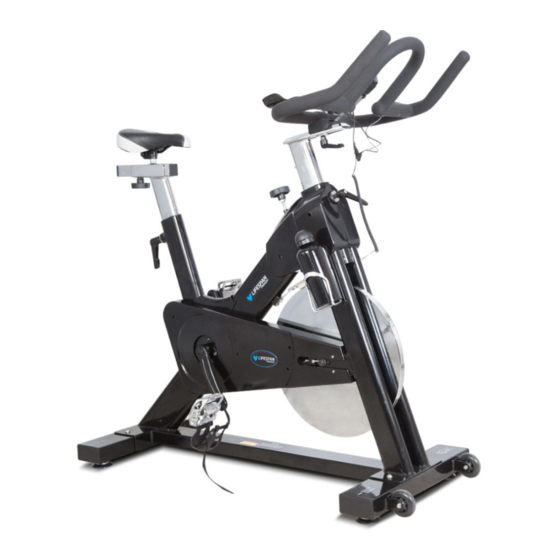
Table of Contents
Advertisement
Quick Links
SP-870 M3 Spin Bike
Read all instructions carefully before using this product.
Retain this owner's manual for future reference.
IMPORTANT
All nuts and bolts are to be checked and tightened on a regular basis. This includes pedals and
other moving parts. Failure to do so may cause damage to your threads and void your warranty.
NOTE:
Product may vary slightly from the item pictured due to model upgrades. This manual may be subject to updates or changes.
Up to date manuals are available through our website at www.lifespanfitness.com.au
USER MANUAL
Advertisement
Table of Contents

Summarization of Contents
Important Safety Instructions
Medical Consultation Before Exercise
Consult a doctor before starting any exercise program, especially with pre-existing conditions or medications.
Monitor Body Signals During Exercise
Pay attention to your body's signals; stop exercising if you experience pain, chest tightness, or dizziness.
Child and Pet Safety
Keep children and pets away from the equipment as it is designed for adult use only.
Pre-Use Equipment Checks
Before use, check that all nuts and bolts are securely tightened and ensure adequate free space.
Care Instructions
Regular Maintenance and Cleaning
Ensure nuts/bolts are tight, lubricate joints, and wipe machine with a dry cloth.
Battery Usage Guidelines
Proper installation, types, handling, and disposal of batteries for safety and performance.
Assembly Instructions
Attaching Stabilizers
Secure the front and rear stabilizers to the main frame using specified bolts and washers.
Mounting the Seat
Fix the seat onto the seat post adjustment assembly using the provided nuts.
Installing Handlebar Post and Handlebar
Insert and secure the handlebar post and handlebar assembly to the main frame, ensuring tightness.
Attaching Pedals and Kettle Holder
Connect the left and right pedals to crank arms and attach the kettle holder with screws and washers.
Adjusting Tension and Emergency Brake
Learn how to adjust resistance and use the emergency brake function via the control knob.
Computer Operation
Console Buttons Overview
Overview of console buttons including MODE, SET, RESET, and RECOVERY for system control.
Console Functions Explained
Explanation of console functions like SCAN, RPM, SPEED, TIME, DISTANCE, and PULSE.
Initial Operation Procedure
Steps for installing batteries and initiating the computer console's main menu.
Setting Up Console Values
Guide to setting target values for TIME, DISTANCE, CALORIES, and PULSE on the console.
Understanding Scan and Recovery Modes
How to use SCAN mode and interpret the RECOVERY function results displayed on the console.
Computer Operation Notes and Battery Specifications
Important notes on sleep mode, troubleshooting, and required battery specifications for the console.
Exercise Guide
Warm-Up Procedures
Recommended warm-up routine including stretching and light exercises to prepare the body for workout.
Cool-Down Procedures
Guidelines for cooling down after exercise, including light activities and stretching for flexibility.
Workout Intensity Guidelines
Chart and explanation of target heart rate zones based on age for optimal exercise intensity.
Warranty Information
Australian Consumer Law Guarantees
Information on consumer rights, guarantees, and remedies under Australian Consumer Law for product failures.
Warranty and Support Contact
Contact details and procedures for obtaining warranty service or technical support via email.
Hand Pulse Technology
Proper Hand Pulse Sensor Operation
Ensuring good contact on sensors and appropriate skin moisture for accurate pulse readings.
Factors Affecting Pulse Readings
Details on factors like grip, muscle tension, static electricity, and noise that can impact pulse sensor accuracy.
Limitations and Testing Hand Pulse Sensors
Understanding limitations, testing sensor accuracy, and improving readings by ensuring proper contact and moisture.
















Need help?
Do you have a question about the M3 and is the answer not in the manual?
Questions and answers